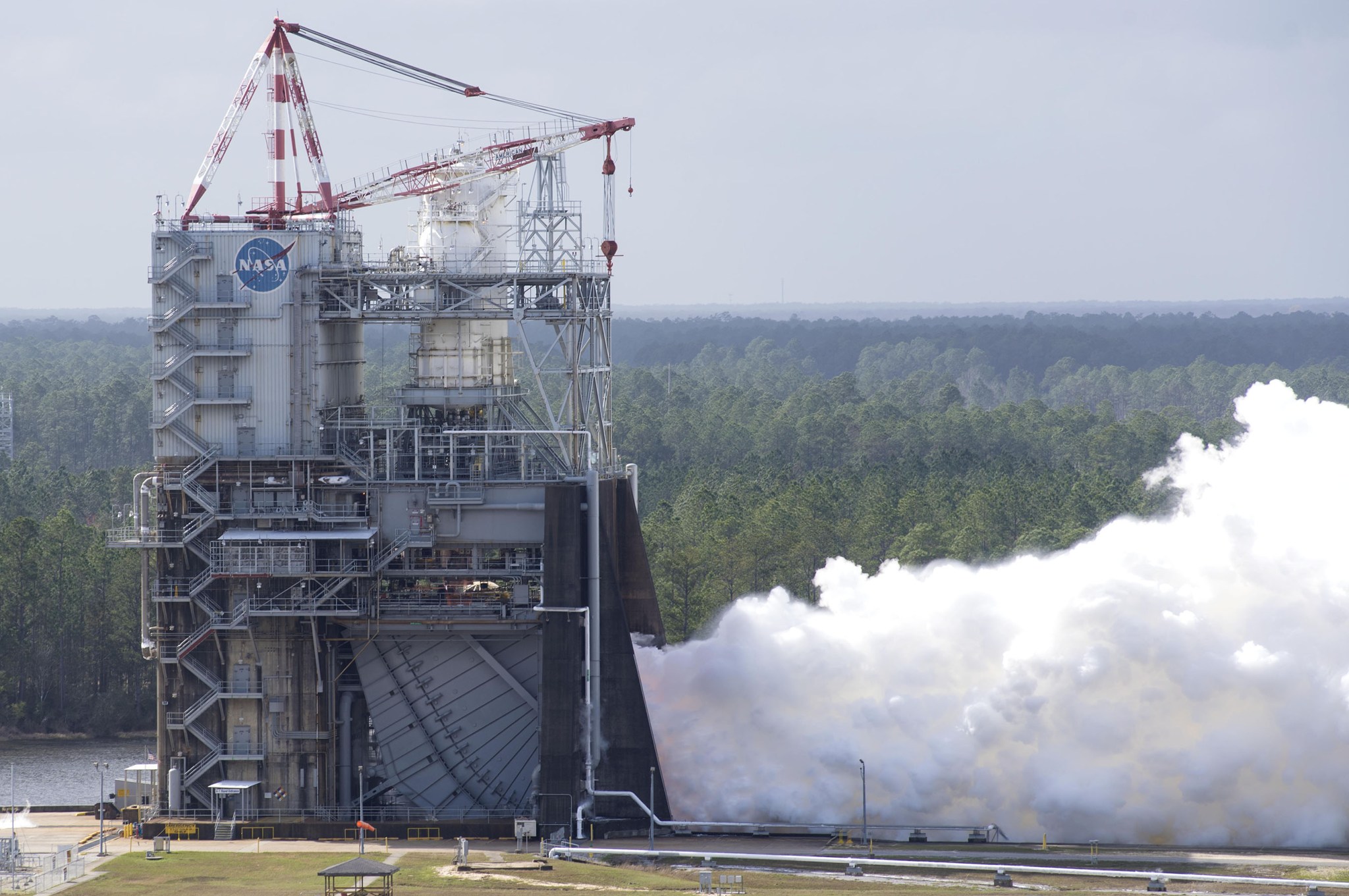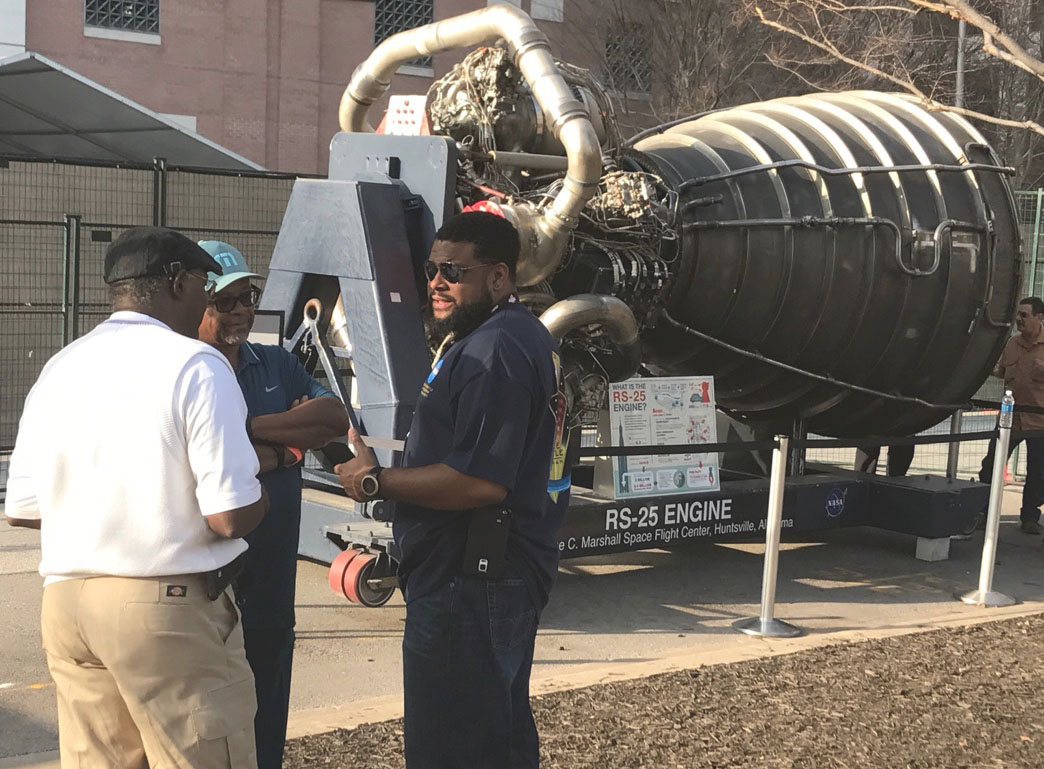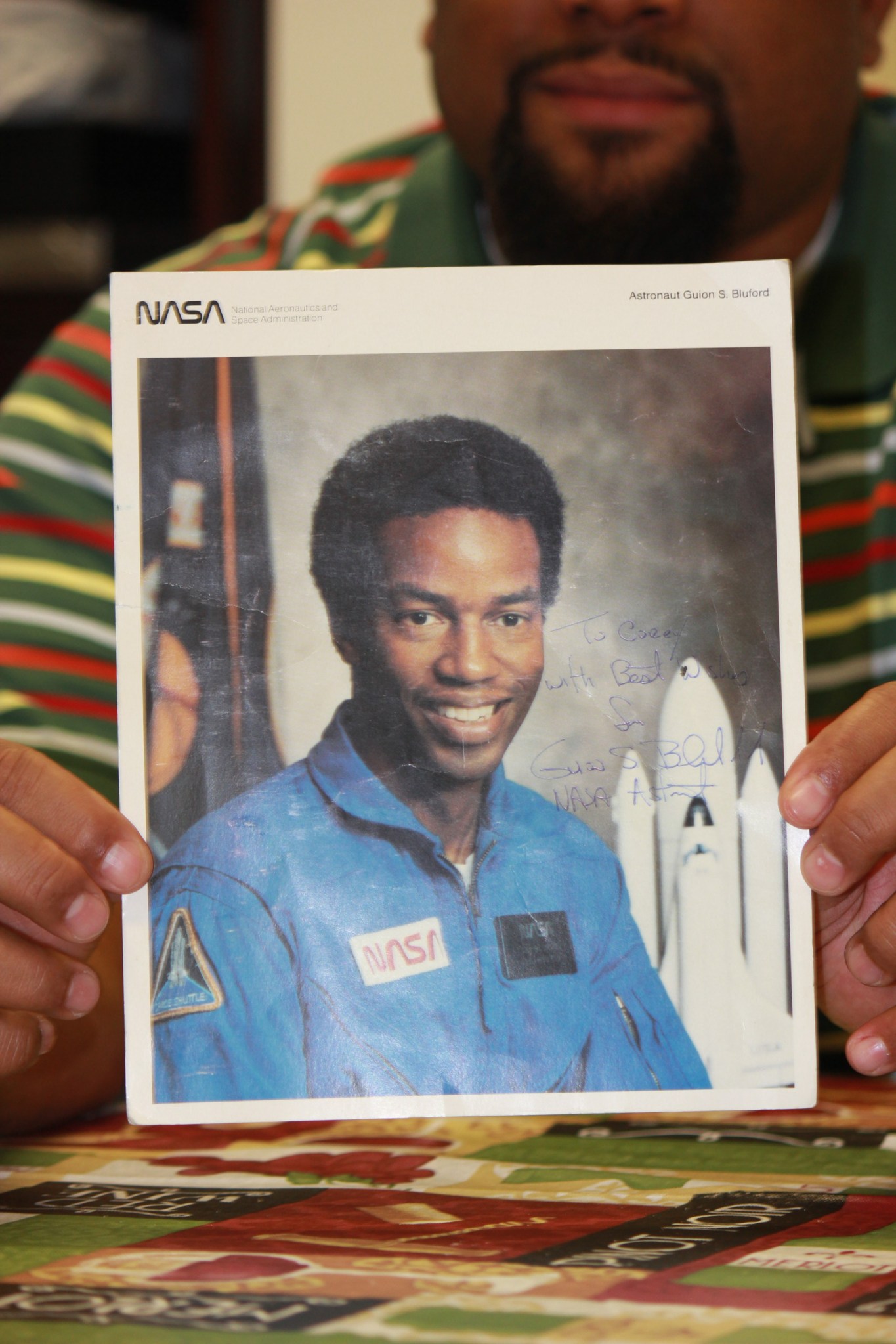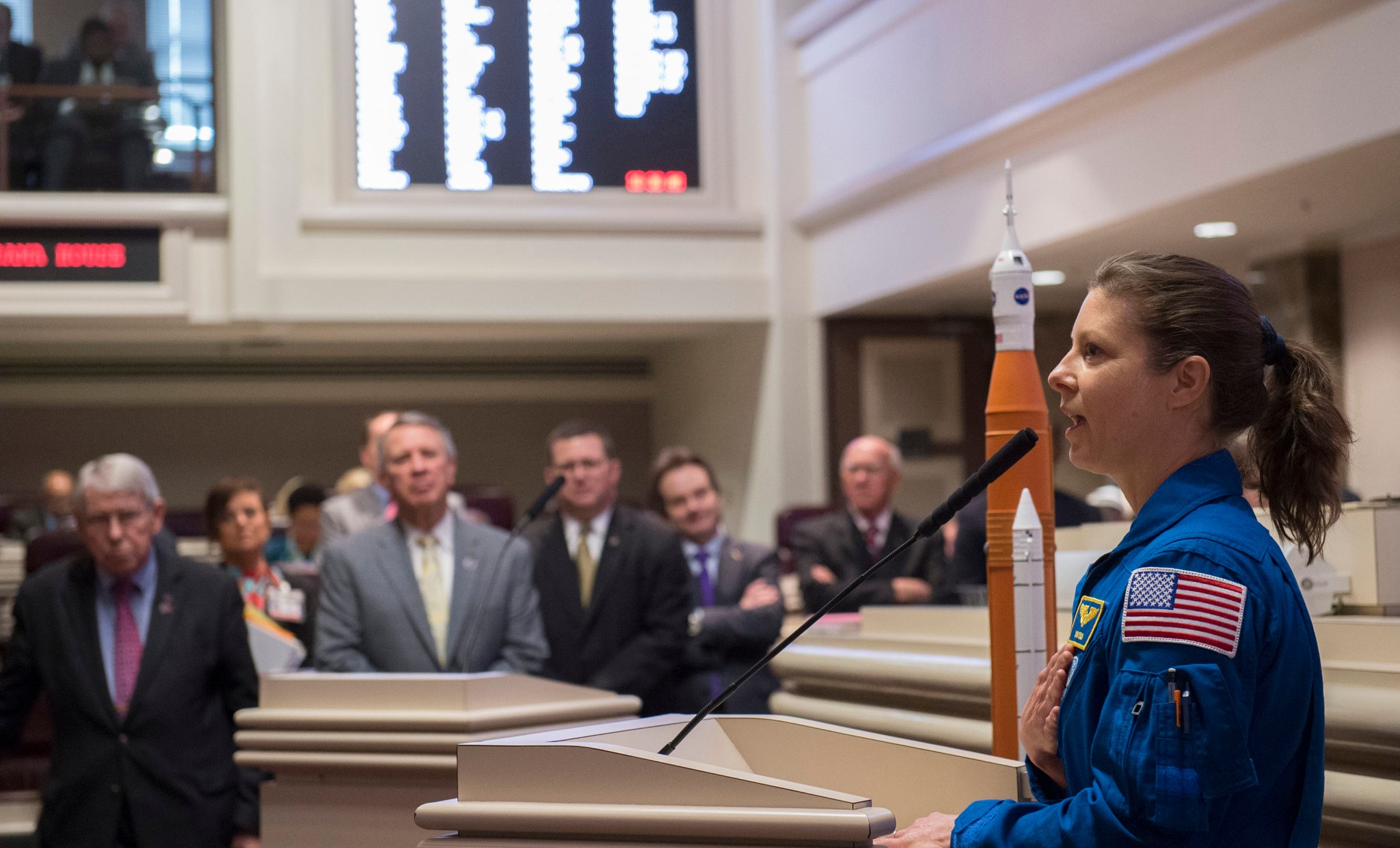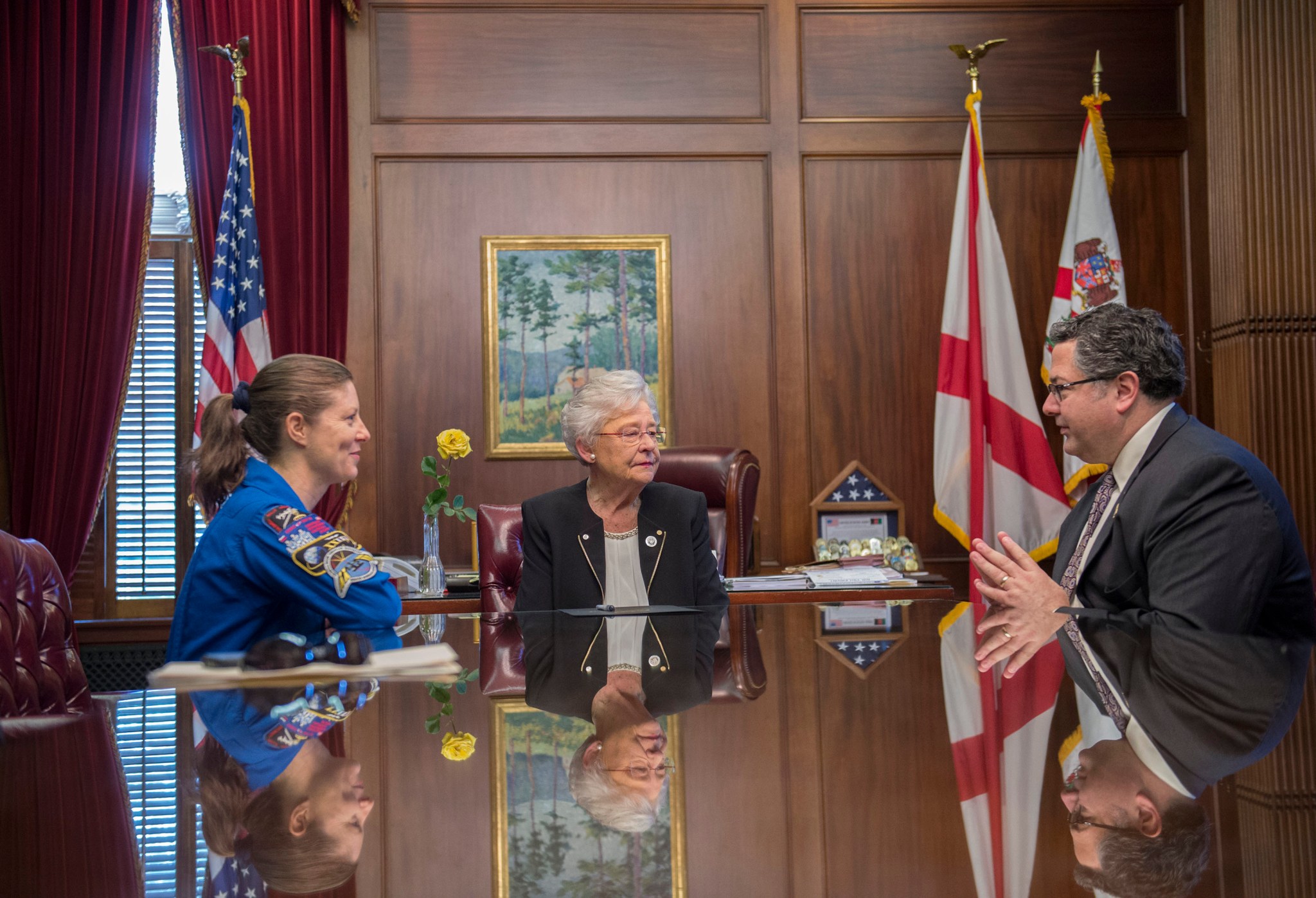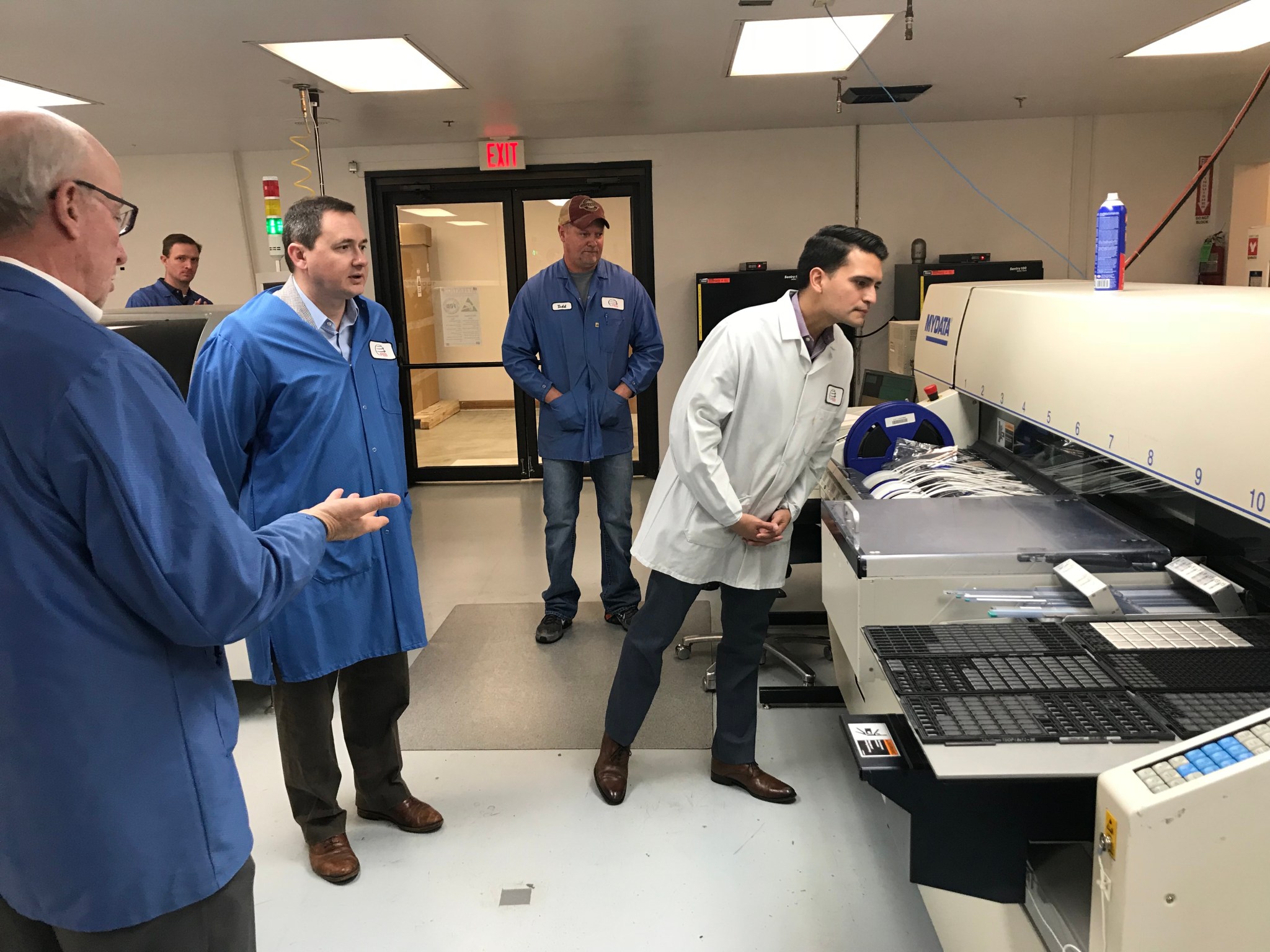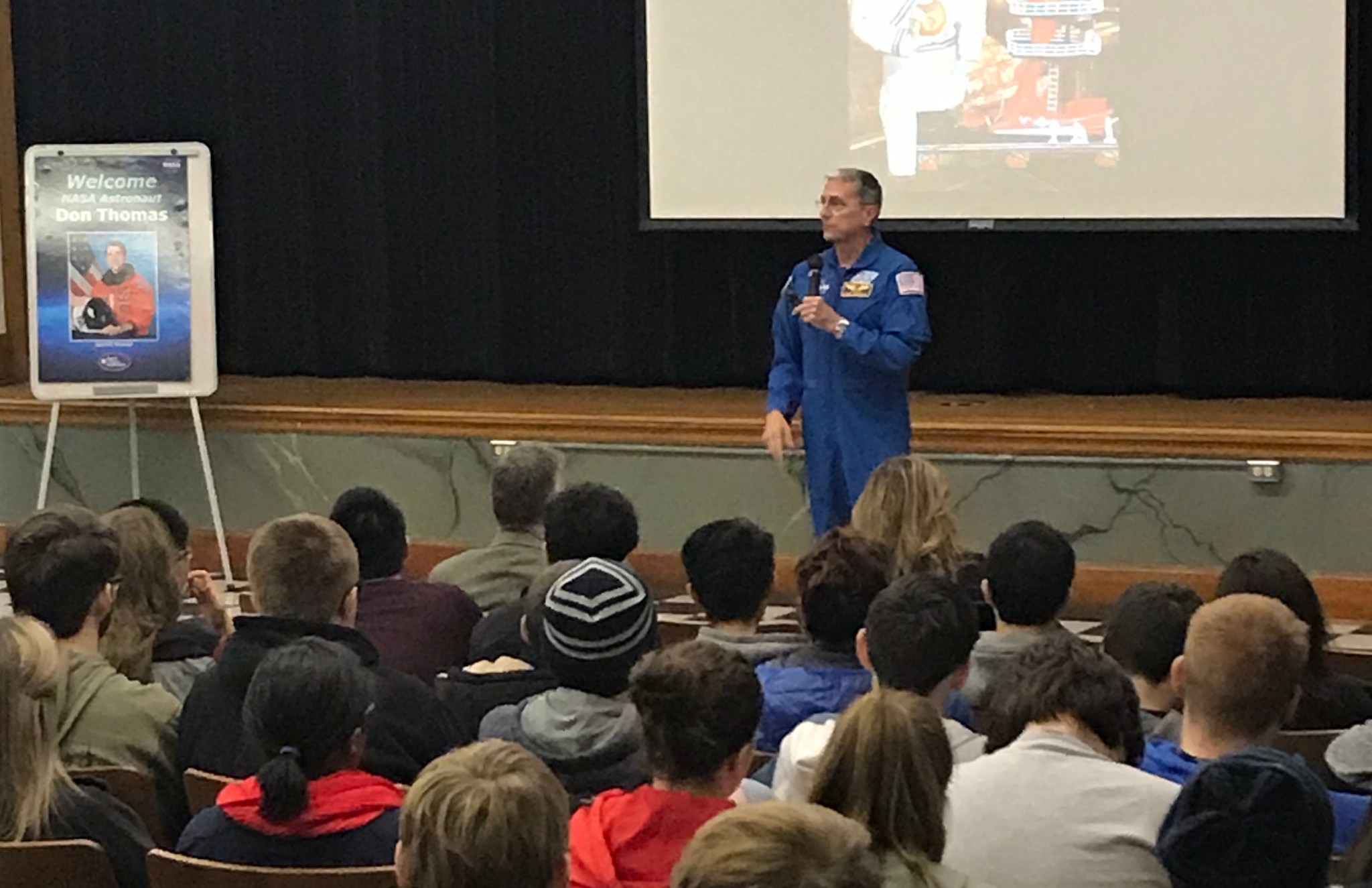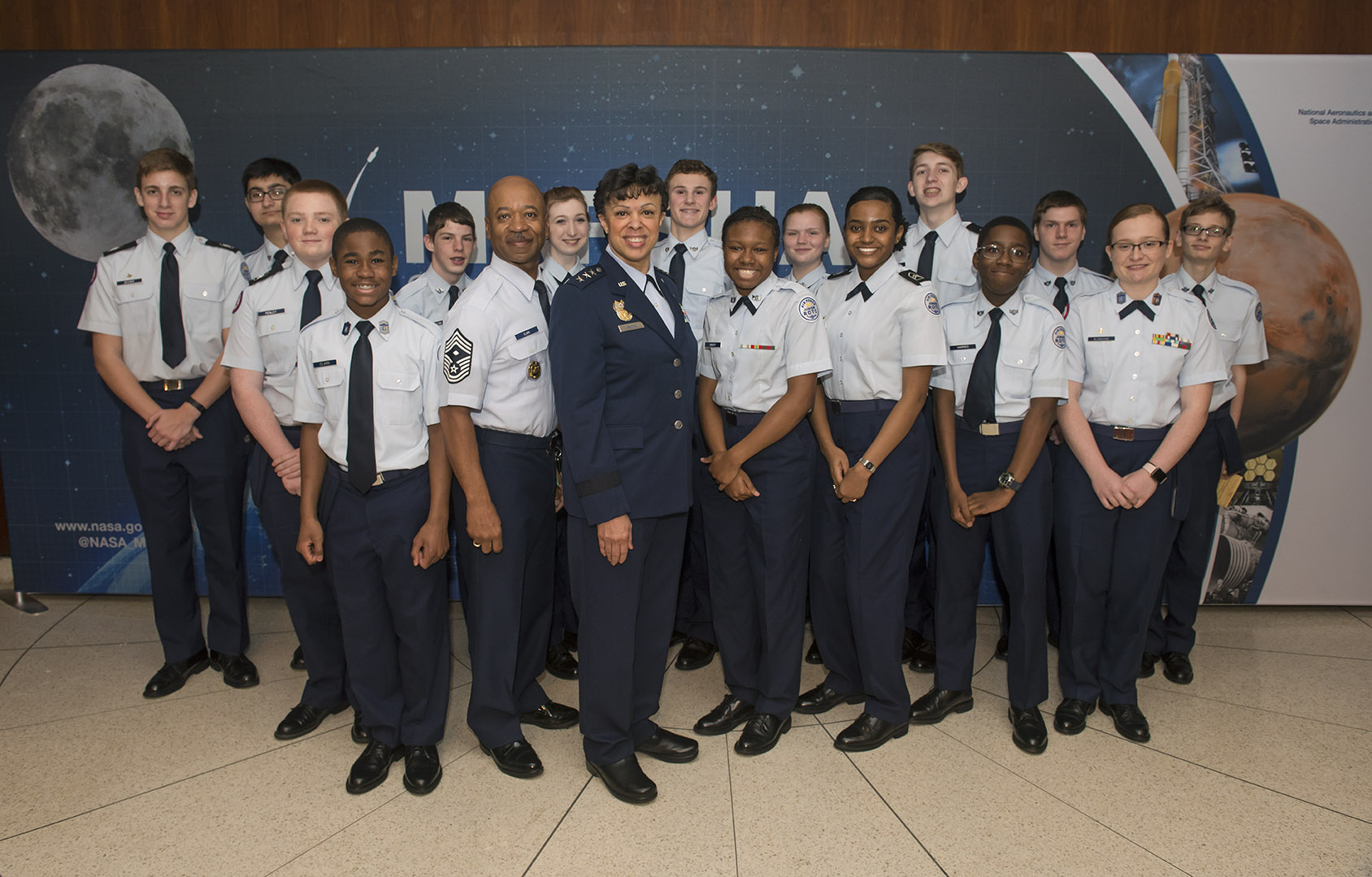In This Week’s Star
- NASA’s Deep-space Rocket Intertank Loaded for Shipment, Structural Testing
- Three Expedition 54 Crewmates Return to Earth
- RS-25 Engines Powered to Highest Level Ever During Stennis Test
- POIC Team Members Recognized for Reaching 100 Hours of Crew Utilization
- Marshall Engineer Corey Harrell Launches Inspiration into Communities
- NASA Officials Celebrate Alabama’s Role in Space Exploration
- NASA Officials and Industry Partners Visit Oklahoma Businesses, Promote STEM Education
- Marshall Hosts Small Business Alliance Meeting Feb. 22
- Marshall Celebrates Black History Month
- This Week in NASA History: Apollo 9 Launches – March 3, 1969
- Obituaries
NASA’s Deep-space Rocket Intertank Loaded for Shipment, Structural Testing
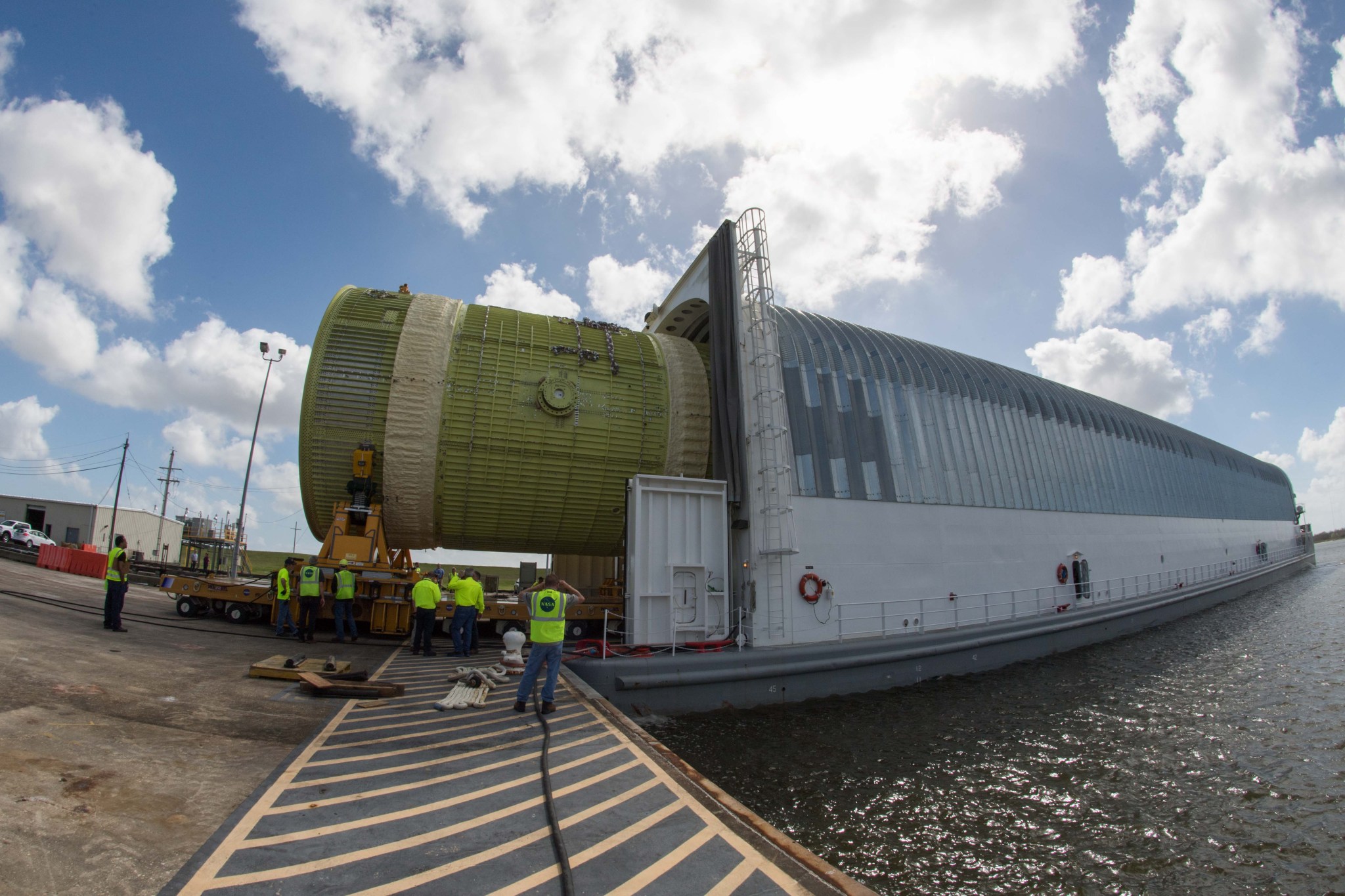
A structural test version of the intertank for NASA’s new heavy-lift rocket, the Space Launch System, is loaded onto the barge Pegasus Feb. 22, at NASA’s Michoud Assembly Facility. The intertank is the second piece of structural hardware for the rocket’s massive core stage scheduled for delivery to NASA’s Marshall Space Flight Center for testing. Engineers at Marshall will push, pull and bend the intertank with millions of pounds of force to ensure the hardware can withstand the forces of launch and ascent. The flight version of the intertank will connect the core stage’s two colossal fuel tanks, serve as the upper-connection point for the two solid rocket boosters and house the avionics and electronics that will serve as the “brains” of the rocket. Pegasus, originally used during the Space Shuttle Program, has been redesigned and extended to accommodate the SLS rocket’s massive, 212-foot-long core stage — the backbone of the rocket. The 310-foot-long barge will ferry the flight core stage from Michoud to other NASA centers for tests and launch. (NASA/Michoud/Steven Seipel)
Three Expedition 54 Crewmates Return to Earth
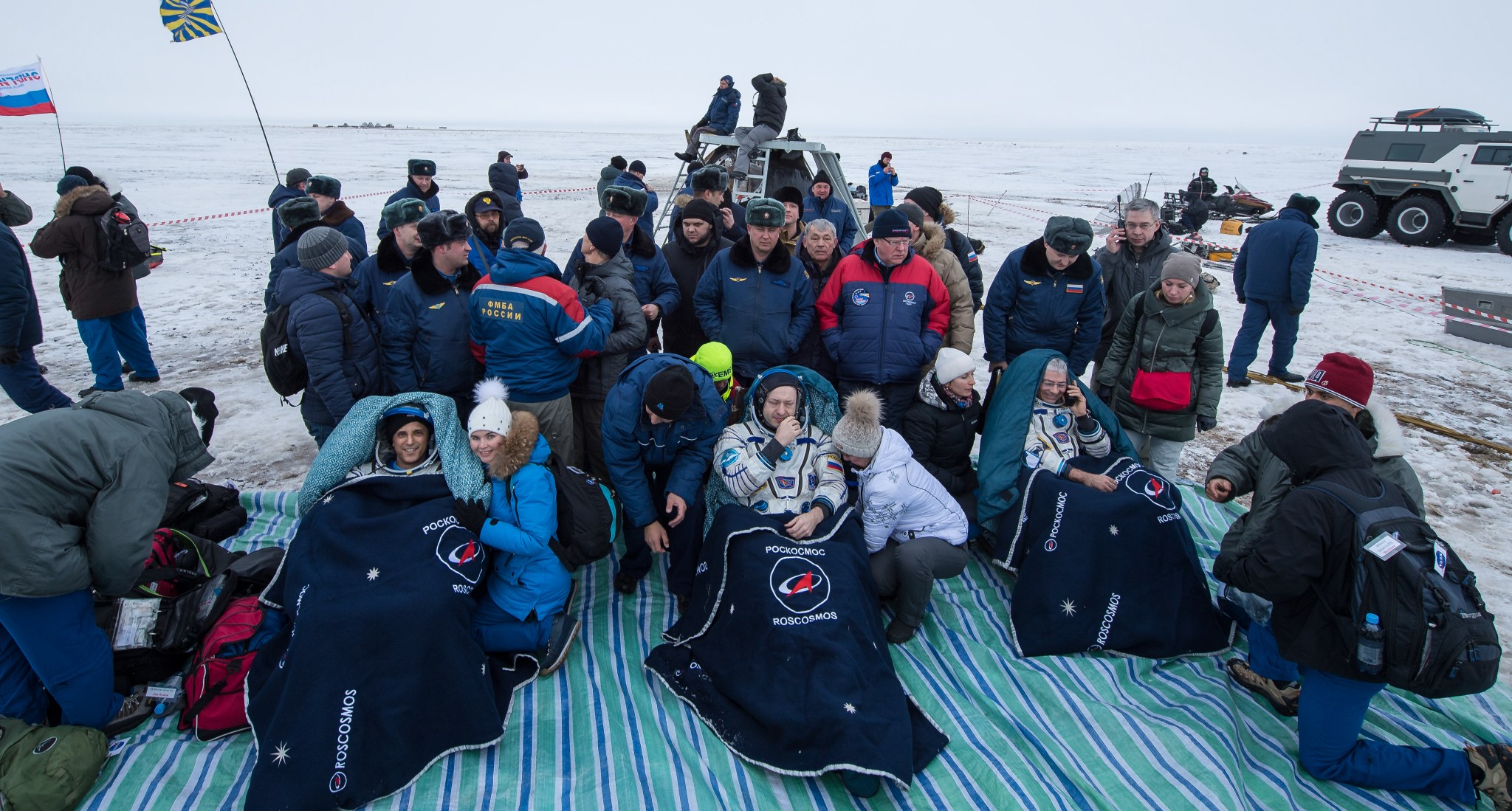
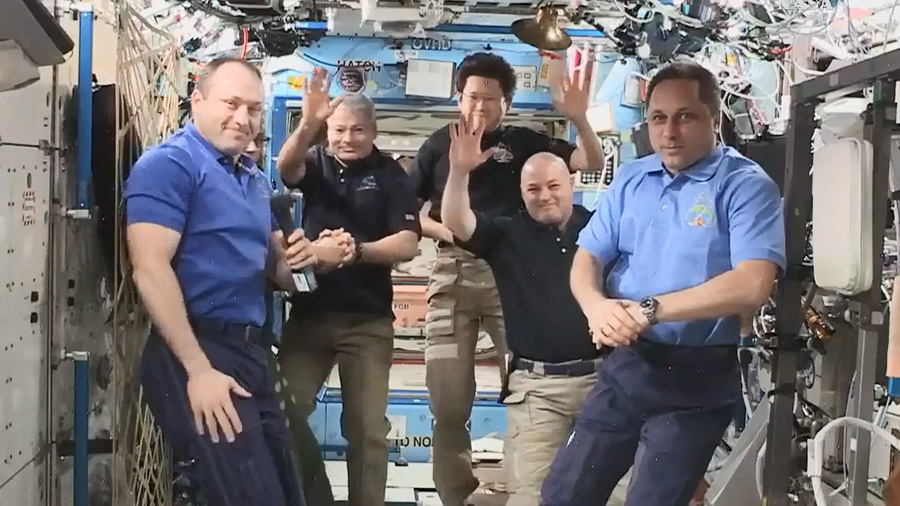
After living and working in space for months, three members of the Expedition 54 crew aboard the International Space Station, including NASA astronauts Mark Vande Hei and Joe Acaba, returned to Earth Feb. 27.
Vande Hei, Acaba and cosmonaut Alexander Misurkin of Roscosmos landed at 8:31 p.m. CST southeast of the remote town of Dzhezkazgan in Kazakhstan.
Their time on station marked the beginning of the first long-term increase in crew size on the U.S. segment, enabling NASA to double the time dedicated to research and achieve a record-setting week that surpassed 100 hours of research.
Expedition 54 crew members set the new record with help from flight controllers at NASA Marshall Space Flight Center’s Payload Operations Integration Center — “science” central for the orbiting laboratory. Marshall flight controllers work with astronauts 24/7, 365 days a year in support of the scientific experiments.
Highlights from Expedition 54’s research include investigations into the manufacturing of fiber optic filaments in microgravity, improving the accuracy of an implantable glucoses biosensor and measuring the Sun’s energy input to Earth.
Now operating the station are Expedition 55 crew members Commander Anton Shkaplerov of Roscosmos and Flight Engineers Scott Tingle of NASA and Norishige Kanai of the Japan Aerospace Exploration Agency. Astronauts Ricky Arnold and Drew Feustel of NASA, and Oleg Artemyev of Roscosmos are scheduled to launch March 21 and arrive at the space station two days later, returning the crew size to six.
RS-25 Engines Powered to Highest Level Ever During Stennis Test
Operators powered one of the engines for NASA’s new heavy-lift rocket, the Space Launch System, up to 113 percent thrust level — the highest RS-25 power level yet achieved — during a Feb. 21 test at Stennis Space Center. The test lasted 260 seconds with power levels at 113 percent for 50 seconds of the test. This was the third full-duration test conducted on the A-1 Test Stand at Stennis this year. Four RS-25 engines will help power SLS at launch, supplying a combined 2 million pounds of thrust and working in conjunction with a pair of solid rocket boosters to provide more than 8 million pounds of thrust. The SLS engines, former space shuttle main engines, are being modified to operate at 111 percent of their original power level. Increased engine performance is crucial for enabling SLS missions to deep space as the rocket evolves to be larger and carry astronauts and heavy cargo on a single flight. In addition to achieving the higher thrust level, the Feb. 21 hot fire also featured a test of an RS-25 flight controller, as well as a 3D-printed engine component. (NASA/Stennis)
POIC Team Members Recognized for Reaching 100 Hours of Crew Utilization

During a video call Feb. 23 with crew members aboard the International Space Station, NASA Marshall Space Flight Center Associate Director Jonathan Pettus appears on a screen mounted in the space station, with the Cupola Observational Module as the backdrop. Pettus and the Payload Operations Integration Center team gathered at Marshall’s Building 4663 for the call to NASA astronauts Joe Acaba, Mark Vande Hei and Scott Tingle. It was part of a ceremony recognizing the POIC team for hitting 100 hours of crew utilization onboard the station in a single week. POIC team members were presented with a banner recognizing the achievement. In 2017, the station added a fourth crew member for the first time, which resulted in nearly doubling the typical time of about 35 hours a crew has devoted to research each week on the station. In early February, during a week without major operations or maintenance which would trim crew time allotted to research, the crew achieved a record of more than 100 hours of research. The POIC serves as “science central” for the station, working 24/7, 365 days a year in support of the orbiting laboratory’s scientific experiments. (NASA/Scott Tingle)
Marshall Engineer Corey Harrell Launches Inspiration into Communities
By Morgan MacMillan
Corey Harrell, the engines Safety and Mission Assurance branch chief at NASA’s Marshall Space Flight Center, knew at a young age that his passion for math and science would take him places, but he never imagined that his work would enable missions to the Moon, Mars and beyond.
After graduating from Tennessee State University in Nashville with his electrical engineering degree in 2001, Harrell received many job offers. He accepted a position in Dallas before stumbling across a gift that made him reconsider his opportunities.
While packing to relocate to Texas, an autographed picture of Guion Stewart Bluford Jr., the first African-American astronaut, fell from the pages of his high school yearbook. The gift from his aunt caused him to consider a job offer to work with NASA Marshall.
“The picture of Bluford was my sign to take the job with Marshall,” said Harrell. “I felt like it was telling me something.”
Today, he supports the S&MA Directorate’s Liquid Engines Office of NASA’s Space Launch System Program. This role allows him to contribute to the testing that ultimately certifies the rocket’s RS-25 engines to power the SLS. Harrell also oversees the safety of testing and assembly at NASA’s Stennis Space Center.
SLS, NASA’s new heavy-lift rocket, will enable a new era of exploration beyond low-Earth orbit and send astronauts in the Orion spacecraft on deep-space missions to the Moon, Mars and beyond.
“I never get tired of seeing engine tests. Every time I get to witness one, I feel a sense of completeness,” Harrell said. “Not many people can say they’ve seen a rocket engine test, much less been a part of one.”
Harrell still looks to his autographed photo for inspiration from time to time and harnesses that encouragement from Bluford to motivate younger generations. Harrell has spoken about his passion for NASA at schools, career fairs and even the 2017 Super Bowl in Houston.
Being able to see himself in the students who are engaging in the STEM fields of science, technology, engineering and mathematics is something that drives Harrell to spread the word about the agency. Introducing STEM disciplines to younger generations from various backgrounds is a partnership that NASA continues to build, and Harrell has become a useful member of the effort.
“It’s so important to get the message out about NASA,” said Harrell. “I love to talk, and I enjoy talking about what I do. Children and adults alike appreciate hearing about what we do here, and I’m fortunate enough to be able to tell them about it.”
MacMillan, an ASRC Federal/Analytical Services employee, supports the Office of Strategic Analysis & Communications.
NASA Officials Celebrate Alabama’s Role in Space Exploration
By Jonathan Deal
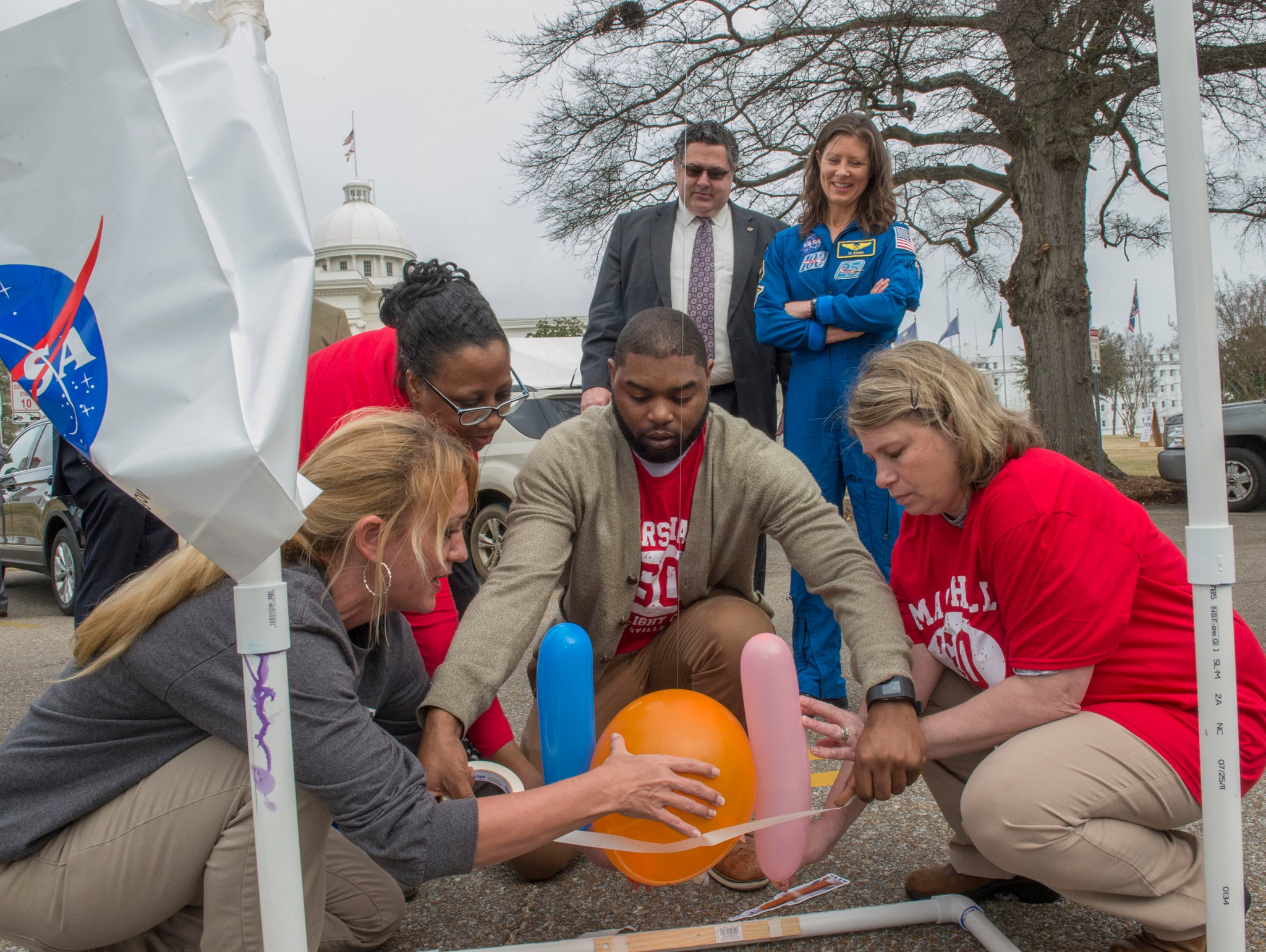
NASA Marshall Space Flight Center Director Todd May, NASA astronaut Tracy Dyson and other Marshall officials met with lawmakers at the Alabama State House Feb. 22 as part of “NASA Day in Montgomery,” celebrating the state’s contributions to space exploration.
Officials from Marshall spent the day spreading the word, during the Aerospace States Association’s Alabama Aerospace Week, about the importance of the state’s role in leading America back to the Moon and on to Mars. Marshall leaders met with elected officials, and NASA was honored by the Alabama Legislature with a resolution and proclamation from Alabama Gov. Kay Ivey recognizing the space agency’s achievements.
“On behalf of NASA’s Marshall Space Flight Center, I want to thank you for your continued support of the center and our great purpose of space exploration and scientific discovery,” said May inside the Alabama House of Representatives chamber. “We are paving the way for a new era of American leadership in space and bold missions that put the Moon, Mars and other distant frontiers in reach of humankind — making the impossible, possible.”
Outside the Alabama State House, NASA and Marshall interactive exhibits were on display, including a 3-D printing demonstration and a Moon rock returned to Earth from the from the Apollo 15 mission. NASA team members and Alabama school teachers also visited several area Boys & Girls Clubs to inspire and engage students with activities in the STEM fields of science, technology, engineering and mathematics.
After the presentation of the resolution and proclamation, Marshall officials visited Alabama State University where May and Dyson addressed a student group. Dyson told the story of why she decided to become an astronaut and encouraged the students to follow their dreams, while May stressed the importance of studying STEM-related fields.
“We have 6,000 people working in and around Marshall Space Flight Center and we create over 50,000 jobs nation-wide,” May told the Alabama State students. “These are high-tech jobs and they are a really big part of what makes all this possible.
“We are going to need your help,” May continued, “to build a sustainable, human exploration program to take us beyond where we’ve ever been. Even if you don’t come work for NASA, we want you to stay in STEM-type education because that’s the innovation engine that propels the United States to the forefront of technology and education.”
Deal, an ASRC Federal/Analytical Services employee and Marshall Star Editor, supports the Office of Strategic Analysis & Communications.
NASA Officials and Industry Partners Visit Oklahoma Businesses, Promote STEM Education
NASA’s Marshall Space Flight Center team members and industry partners visited Oklahoma Feb. 20-24, to highlight the work being done across the state to build and supply aerospace components for the agency’s new heavy-lift rocket and crew vehicle, the Space Launch System and Orion spacecraft.
Representatives visited Frontier Electronic Systems in Stillwater, Oklahoma, a Native American, woman-owned, small business that builds electronics critical to controlling the flight of SLS. NASA astronaut Stephen Bowen and other NASA officials and industry team members toured the facility and spoke with Frontier employees who build the electronic systems that are located in the rocket’s core stage where the flight computers and other avionics guide the flight of SLS.
Also during the week, NASA representatives visited schools including the Oklahoma School of Science and Mathematics in Oklahoma City, where former NASA astronaut Don Thomas encouraged students to follow their dreams, work hard and never give up on achieving their goals. The week concluded with a special event and exhibit at the Science Museum Oklahoma in Oklahoma City on Feb. 24. The event focused on inspiring students to pursue careers in science, technology, engineering and math and featured Girl Scout troops from the area.
Marshall Hosts Small Business Alliance Meeting Feb. 22
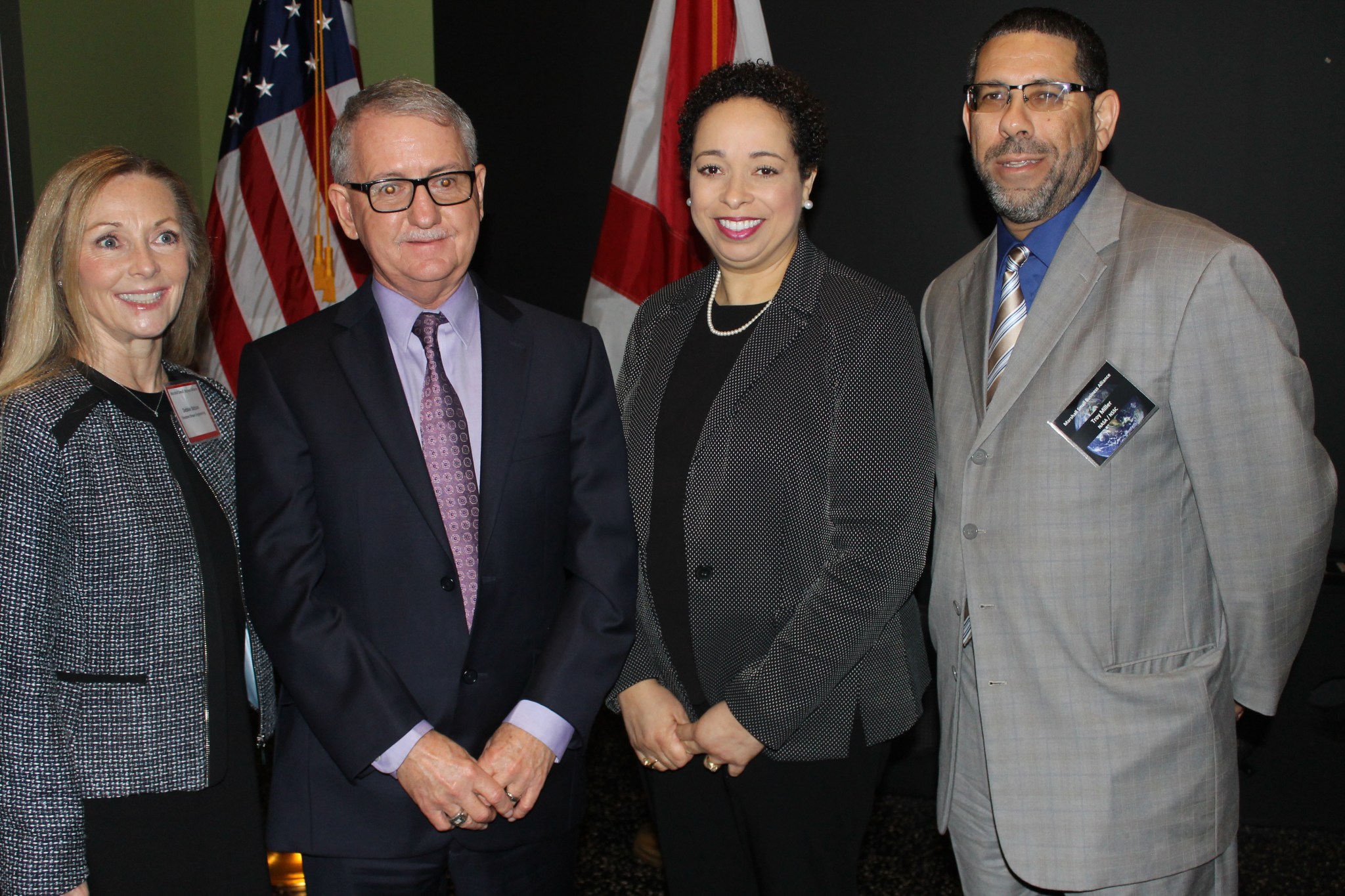
More than 500 representatives of large and small businesses and NASA prime contractors and subcontractors took part in the NASA Marshall Space Flight Center’s Small Business Alliance meeting Feb. 22 at the Davidson Center for Space Exploration in Huntsville. Sharing new contract opportunities and program news with attendees are, from left, Debbie Batson, manager of business development for Teledyne Brown of Huntsville and events coordinator for Marshall’s Prime Contractor Supplier Council; David Brock, Marshall small business specialist; Roslin Hicks, acting deputy director of NASA’s Michoud Assembly Facility; and Troy Miller, small business specialist at NASA’s Shared Services Center. (NASA/MSFC/Taylor Dean)

Representatives of the Huntsville-based firm Cepeda Systems & Software Analysis, left, talk with participants during Marshall’s Small Business Alliance meeting. Dozens of organizations and companies shared information about their services during the semiannual meeting, sponsored by Marshall’s Office of Procurement and Small Business Office. The Marshall Small Business Alliance has helped small companies pursue NASA procurement and subcontracting opportunities for more than a decade. (NASA/MSFC/Taylor Dean)
Marshall Celebrates Black History Month
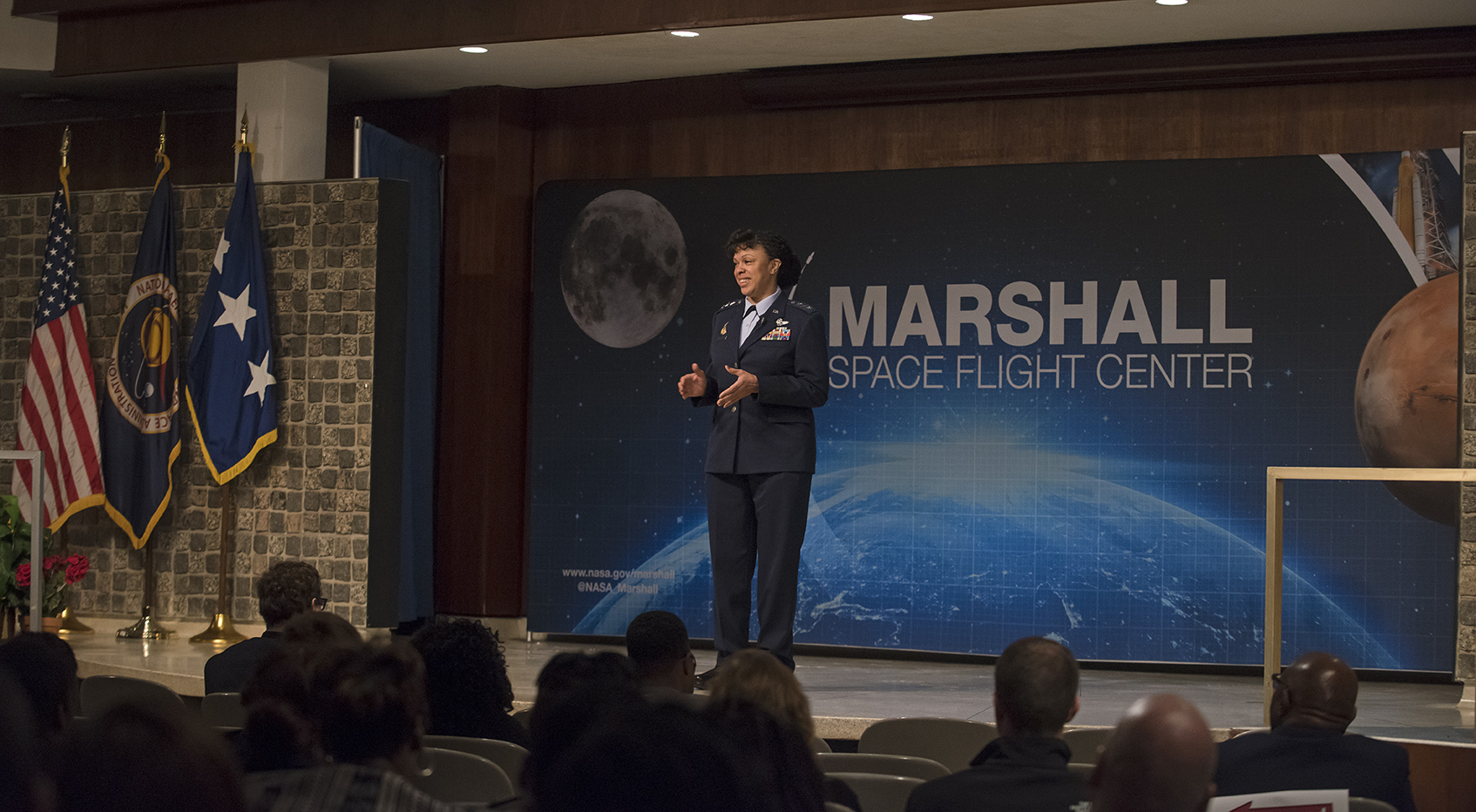
NASA’s Marshall Space Flight Center celebrated Black History Month Feb. 21 with an event focused on the crucial role of African American contributions in the armed services. The featured speaker, Lt. Gen. Stayce Harris, Inspector General of the U.S. Air Force, discussed her past experiences, current professional practices and future aspirations for African Americans in the military and the STEM fields of science, technology, engineering and mathematics. The program was sponsored by Marshall’s Office of Diversity and Equal Opportunity, which strives to promote diversity, equality and inclusion for all individuals, while providing a workplace that is free from discrimination, including harassment and retaliation. (NASA/MSFC/Charles Beason)
Lt. Gen. Stayce Harris, center, stopped to speak with a group of Junior Reserve Officer Training Corps cadets from Bob Jones High School in Madison, Alabama, following Marshall’s Black History Month program Feb. 21. (NASA/MSF/Charles Beason)
This Week in NASA History: Apollo 9 Launches – March 3, 1969
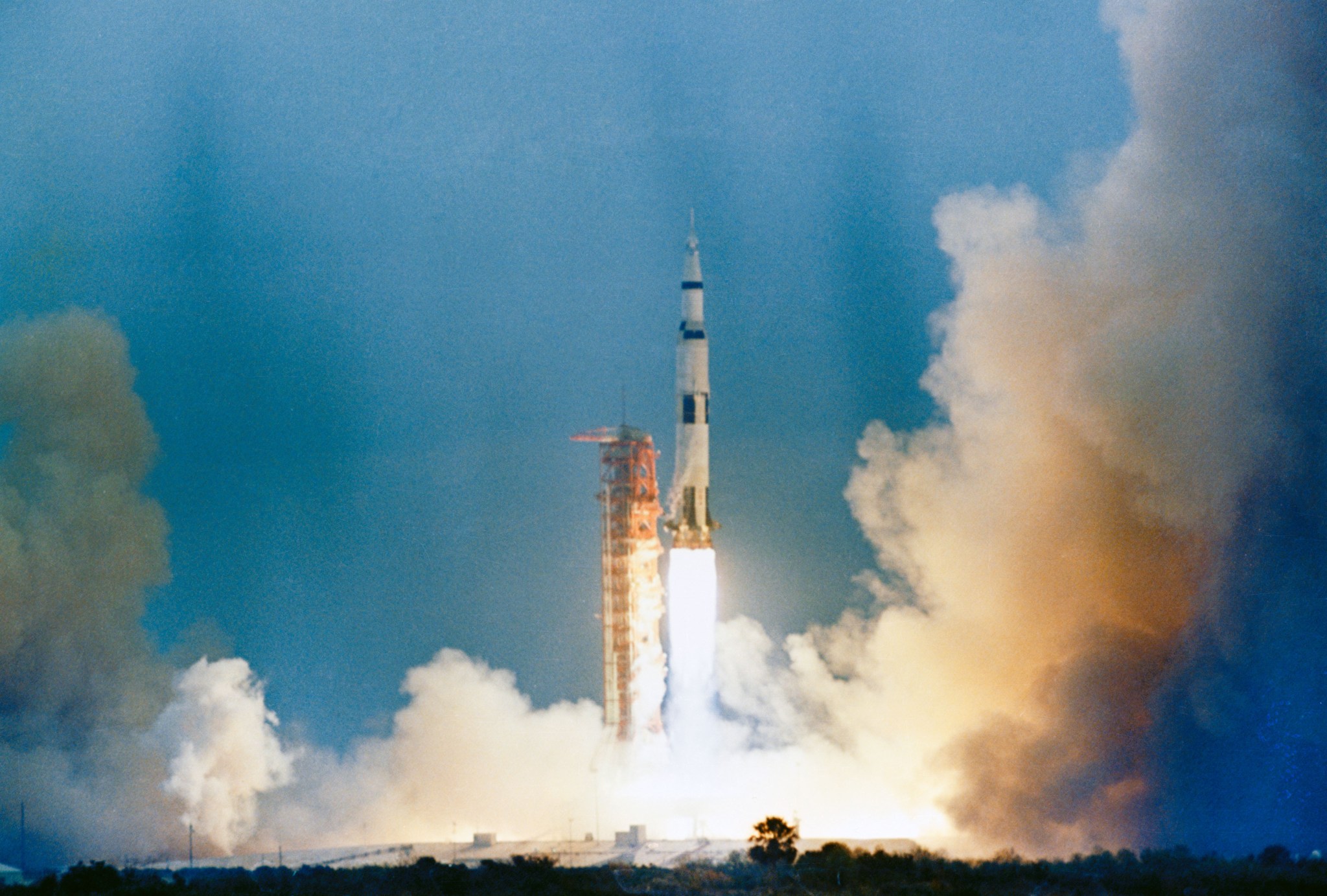
This week in 1969, Apollo 9 launched from NASA’s Kennedy Space Center. Its primary objective was to perform an engineering test of the lunar module and overall check of the launch vehicle and spacecraft systems, the crew, and procedures. All prime mission objectives were successfully met. Apollo 9 was the second crewed mission to launch on a Saturn V rocket. The Saturn V, developed at NASA’s Marshall Space Flight Center, is the most powerful rocket to have ever flown successfully. Today, Marshall is developing NASA’s Space Launch System, the most powerful rocket ever built, capable of sending astronauts to the Moon, Mars and deeper into space than ever before. The NASA History Program is responsible for generating, disseminating and preserving NASA’s remarkable history and providing a comprehensive understanding of the institutional, cultural, social, political, economic, technological and scientific aspects of NASA’s activities in aeronautics and space. For more pictures like this one and to connect to NASA’s history, visit the Marshall History Program’s webpage. (NASA)
Obituaries
Quintin Cletus Soprano, 96, of Huntsville, died Feb. 18. He retired from the Marshall Center in 1986 as a supervisory quality assurance engineer.
Chester Haggard, 92, of Huntsville, died Feb. 19. He retired from the Marshall Center in 1985 as an aerospace engineer. He is survived by his wife, Emily Haggard.
Carl Lee Ballard, 93, of Huntsville, died Feb. 22. He retired from the Marshall Center in 1980 as an engineering technician. He is survived by wife, Jessie R. Ballard.


























